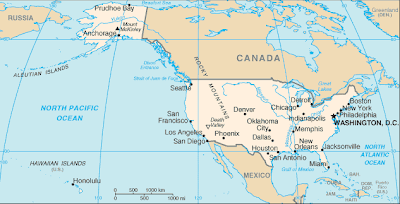Technology changes rapidly. It seems like there is a new version of some device or software presented daily. GIS technology is no exception to this rapid change. While currently employed GIS professionals are usually in their position because their skill set matches the needs of the employer, keeping up with industry development can help you stay relevant. The best way to keep a position or move higher in a company is to be the expert in your field who is able to answer questions and solve problems that others cannot.
In today’s economy, no job is 100% secure. Businesses might downsize, shift focus or close altogether. This could leave a GIS analyst looking for another place to ply their trade. Or, perhaps you are a technician hoping to land a higher level GIS position. In either case would you be current enough with your GIS skills to land the new job?
How can you stay abreast of the constant changes in technology and know what changes you should be focused on to improve your skill set? It is easy to get overwhelmed by the number of software systems, tools, languages, platforms and technology uses there are out there. One way to keep up is to follow blogs (industry and individual) and relevant web sites. The idea here would be to learn about the latest and greatest innovations as they emerge. The problem with this approach is that not every new technology, tool or update will be utilized industry-wide (if at all). One would need to follow too many blogs and sites to get a broad view of the industry. Following blogs can still be a useful tactic, however, for keeping up with specific subjects.
I have found the best way to maintain currency across the GIS board is to study job postings. Even if you are not looking for a job, postings give you detailed insight into what GIS employers are interested in and what they are expecting out of their personnel. It really does not matter what software producers are developing. What matters is what businesses are using and how they are using it.
I make it a practice to search job boards on a regular basis. I am not looking for another position but for insight on how to be better in my current position. I find the best boards for doing this kind of research are the
Geospatial Jobs Clearinghouse and
Indeed.com. I start by searching for job titles that closely match my own. Then I simply read through the body of the listings and look for trends in the position requirements. The good news is that employers tend to structure their position details the same way every time. It usually looks something like this:
- Company overview
- Position Description
- Requirements
- Preferred experience
While the requirements section is probably the most important you should also pay close attention to the preferred experience section. These are the skillsets that can set you apart from the rest of the crowd. Most GIS professionals will have the typical requirements of a degree, experience using desktop GIS software and good communication skills. Those who have specialized skills like scripting/programming languages, photogrammetry, web design or database design will be in more demand. Specialized skills might not be mandated for a position but employers will see you as more valuable to their organization if you have them.
There are many ways to try and keep current with your profession. Whatever method you choose, remember that those who advance their knowledge and skills along with associated industry changes are the most likely to stay useful to their employer and outshine others in their field.




